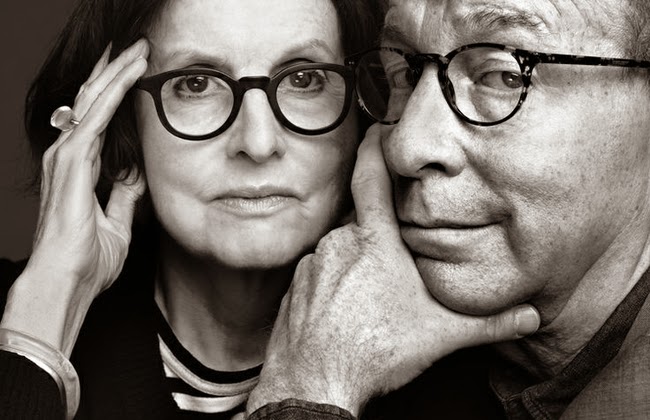
On Monday March 24th, Sharon Louden’s Professional Practice Series presented esteemed art critics Roberta Smith (New York Times) and Jerry Saltz (New York Magazine) in conversation with Randy Cohen for “Person Place Thing” in the Academy’s Wilkinson Hall. The room’s walls, recently stripped of the ten “Big Picture” paintings and not yet adorned for Tribeca Ball, were, for once, bare. Guests outnumbered seats, and their excited chatter, along with live bluegrass music by Duncan Wilkel and Eric Robertson, filled the air.
Familiarize yourself with the Met (and art history at large).Before coming to the Academy, I knew very little about art history. I still know relatively little, but do feel that I have a much better understanding of the trajectory after History and Theory of Composition, and Art and Culture 1, which all Academy students are required to take during their first semester.
You cannot see too much.
“We go to 20, 30 galleries a week, and museums on Sundays,” says Saltz. “Galleries and museums are ecstasy machines – you experience your autonomy while looking at an autonomous object, and it’s great.” The couple underlines the importance of going to see the things you don’t like, as much as the shows you do. “The bad shows teach you as much as the good shows, or even more,” says Saltz. “If you go to Chelsea and see a show and think it’s bad, figure out why.”
Copy, and Redefine Skill
In discussing Donald Judd, Smith explained how after emerging from the Whitney Independent Study program, she copied Judd’s writing extensively to better understand it, in terms of both craft and content. Judd was a Renaissance man, “almost as powerful a writer as he was an artist,” she says. “He used words in a way that were unusual but legible.”
Copying to understand applies not only to writing, but of course also to art. Every Academy student is required to complete numerous Master Copies over the course of his or her two years at the Academy. To successfully copy a masterwork is to understand how the artist achieved his or her final product.
What’s challenging is taking the skills learned from copying to the next level. “In this school, you’re learning time-honored skills,” says Saltz. “You need to reinvent them.” A common criticism most art students hear from their teachers is that whatever they’re doing has already been done. “Don’t listen to ‘it’s been done’,” Saltz says. “Instead, do it again. Until you make it yours. Do the American flag until its not Jasper Johns’ anymore: Its yours.”
“All artists are self taught,” says Smith. “So much of what we do is inborn- our handwriting, our voice… Artistry comes in many shapes and sizes.” Saltz advises students to “follow your oddball obsession,” to make all that art that we are specifically impelled to make. “Make your bad art. Honor that part of your work. Do EVERYTHING. Don’t make PRODUCT.”
In short, Saltz and Smith advise us to first understand the variety of options we have as artists, then to make the art that is most meaningful to us as individuals. Although they may not have known it, their advice lines up incredibly neatly with the Academy’s mission. At the New York Academy of Art, “We believe that rigorously trained artists are best able to realize their artistic vision.”
Sounds simple enough, doesn’t it? One final note, from Saltz: “it only takes a lifetime.”
To learn more about Claire Cushman (MFA 2015), take a peak at her bio and recent paintings. Remember, your thoughts are welcomed.


